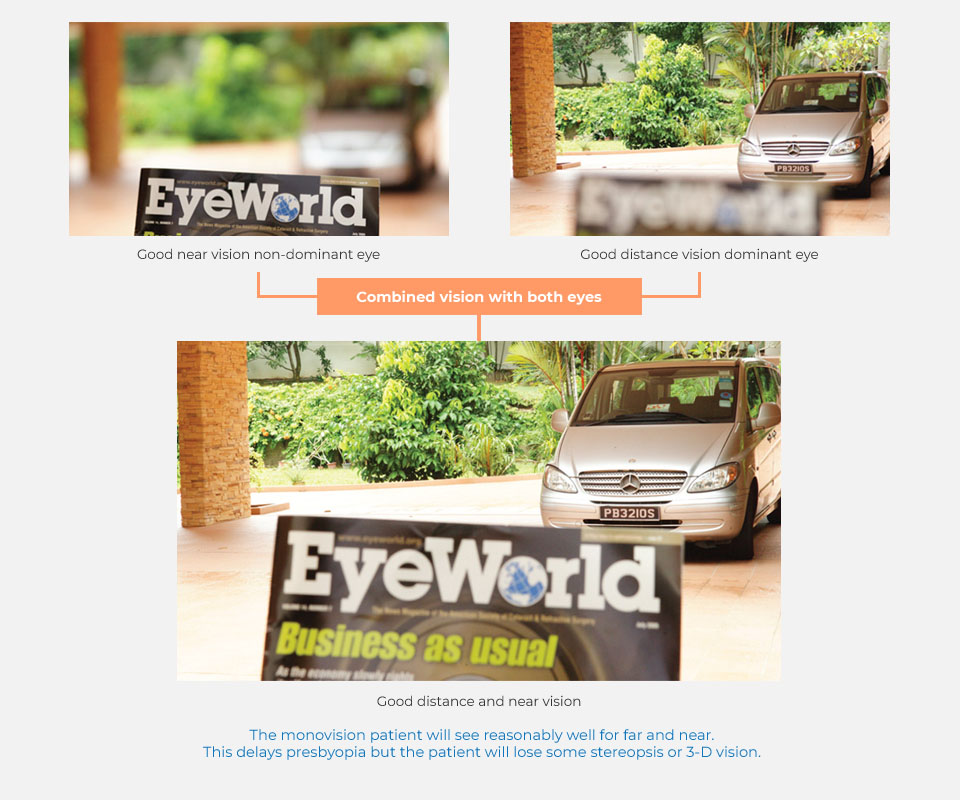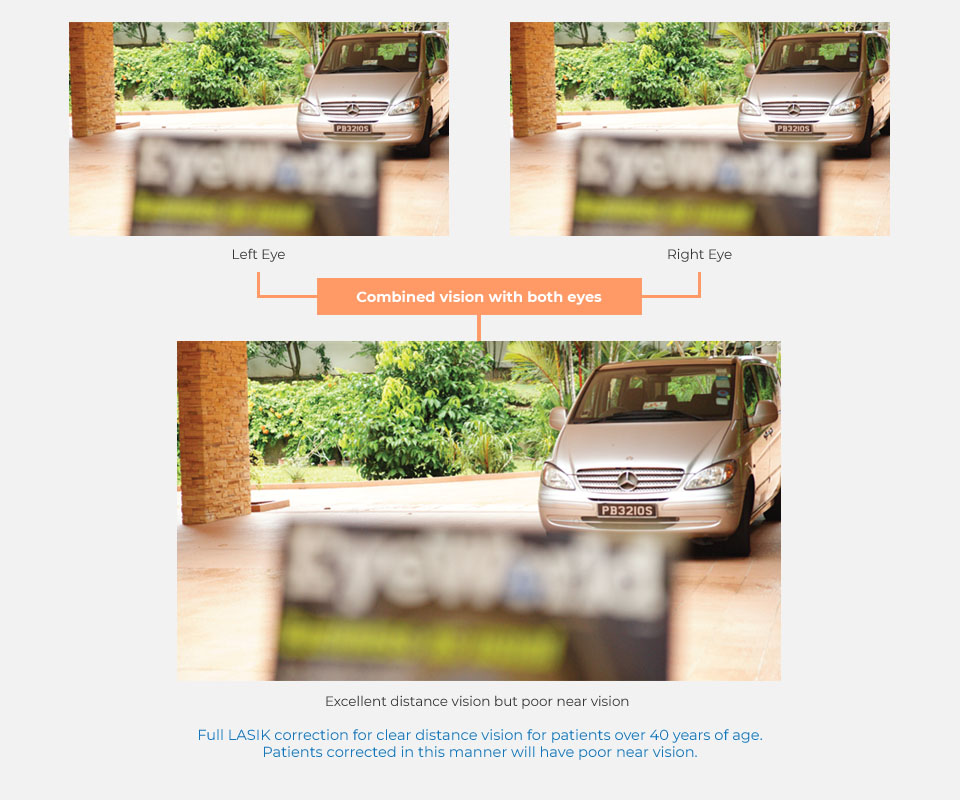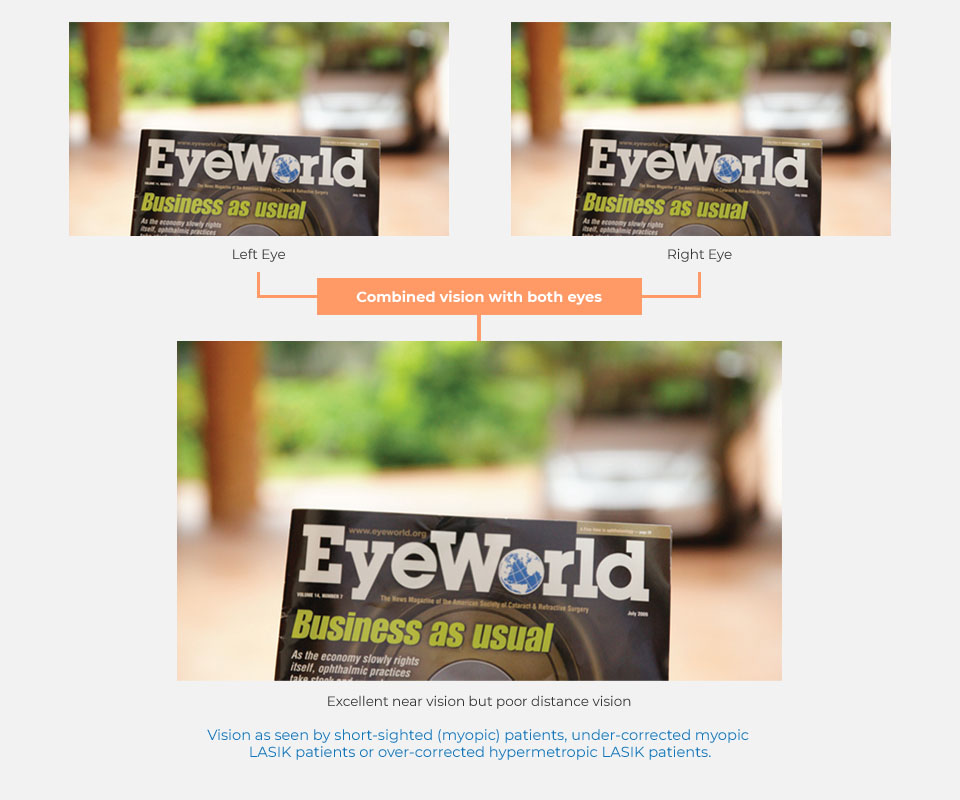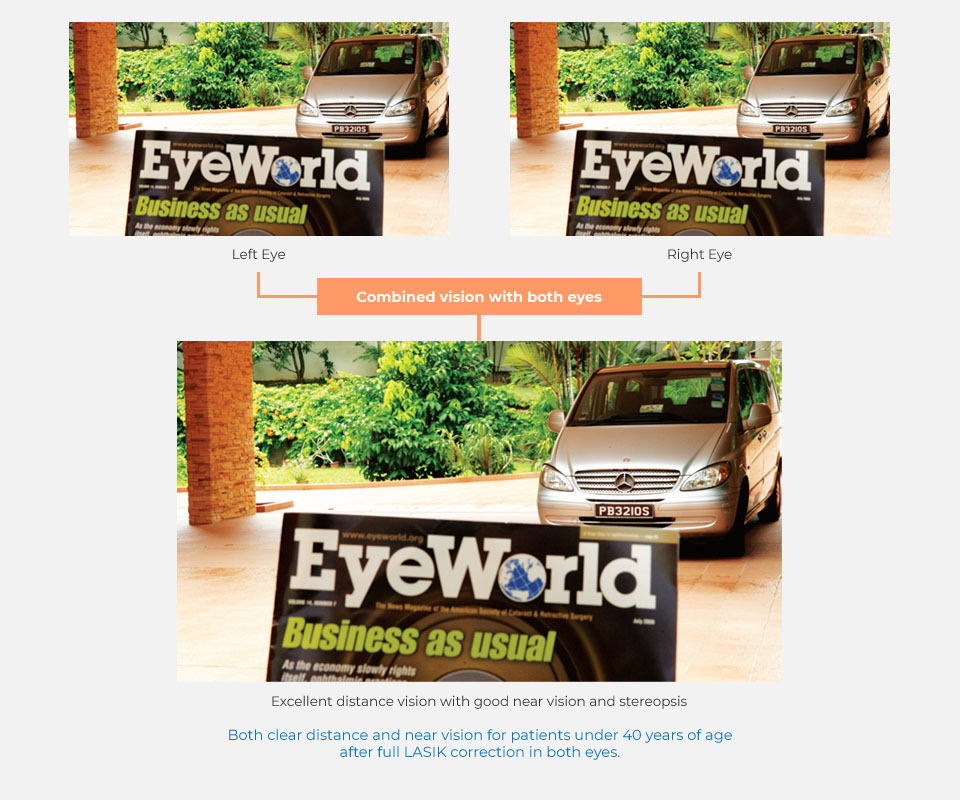Monovision - A Potential Solution for Presbyopia
Monovision literally means "single vision". The dominant eye (the eye we use to aim at things) is corrected to see distance clearly while the other eye (non-dominant eye) is corrected to see near.
Who benefits from monovision?
Presbyopia
After the age of 40, we begin to develop presbyopia or "lao hua yan". The decreasing flexibility of the lens in a presbyope's eye results in a limited range of focus. This condition becomes progressively worse as we age from 40 to 70 years old. Most people with presbyopia/"laohua" will turn to reading glasses to see up close.
How does monovision work?
In monovision, the brain alternates between the two eyes and chooses the appropriate eye to see the appropriate distance.
- E.g.: If your right eye is the dominant/distance eye, the brain will automatically use this eye to see far, while the left non-dominant eye/near eye will only be "triggered" by the brain when one wants to see near.




Many patients adapt to this with great ease, although there are people who are unable to do so.
Monovision can be achieved with contact lenses as well as with LASIK/ TransPRK/ Soft Touch PRK/ ICL/ SMILE/ Cataract Surgery. Monovision spectacle wear is less successful.
Advantages of monovision
The beauty of monovision is that the quality of near vision and distance vision is minimally compromised:
- The contrast of vision is not affected compared to multifocal contact lenses or intraocular lenses
- No visual glare or halos
Monovision has allowed many patients over the age of 45 to function without bifocals or reading glasses for many years. Many ladies are happy with this compromise because they no longer need to carry multiple pairs of spectacles, making it extremely convenient to look at price tags during a sale!
Monovision is a compromise
Not everyone is suitable for monovision. Some of the common problems faced are:
- Unbalanced vision – some people have difficulty in learning how to alternate their vision between eyes.
- Loss of stereovision – the ability to see 3D
- The need to wear glasses to drive confidently at night
Monovision mainly reduces the need for reading glasses. All patients will eventually require reading glasses if they are looking at very small text.
| Monovision | Multifocal | |
|---|---|---|
| Contrast | Good | Compromised |
| Glare or halos | No | Yes |
| Quality of vision | Good | Compromised |
| Loss of stereopsis | Yes | No |
How do I know if I am a suitable candidate for monovision?
The best way to assess one's suitability for monovision is to simulate results of monovision LASIK / cataract surgery by wearing contact lenses with one lens prescribed to see near and the other lens to see far. If there is no giddiness or dizziness for near or distance vision, the brain is successfully switching vision between the ‘distance' eye and ‘near' eye. This indicates a high chance of success for undergoing monovision LASIK / cataract surgery. Unfortunately, some patients come with dense cataracts that have compromised their vision severely and there is no way of testing out monovision with contact lenses for them.
Monovision has been the most successful method to reduce one's dependency on reading glasses.
If you have any further questions, please contact us for further information and advice.